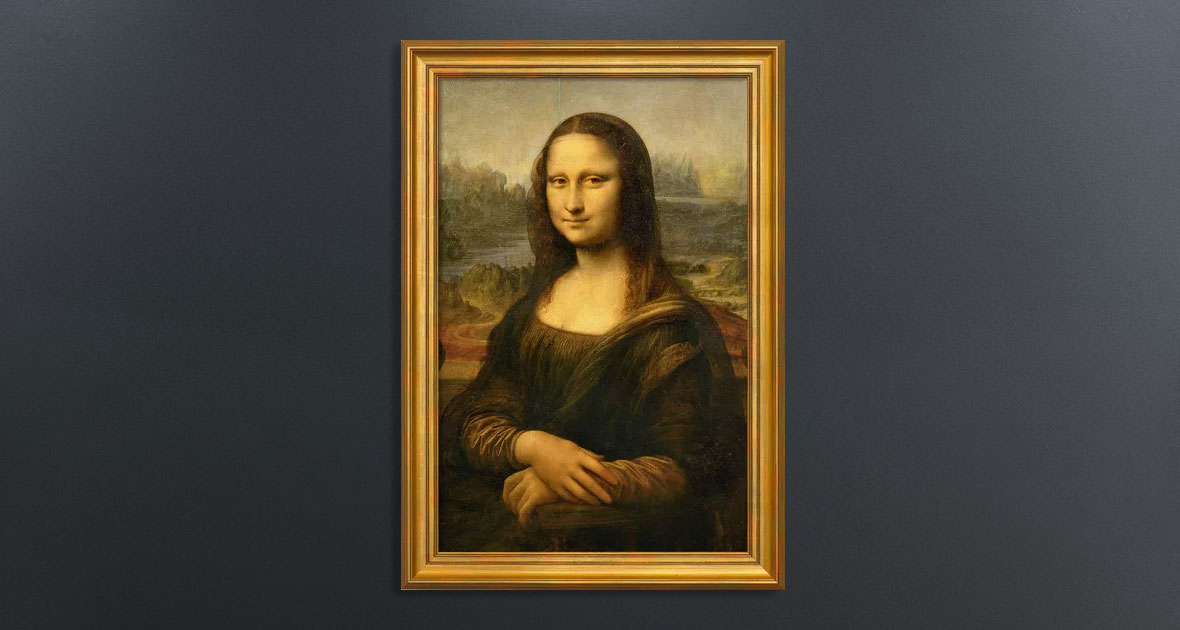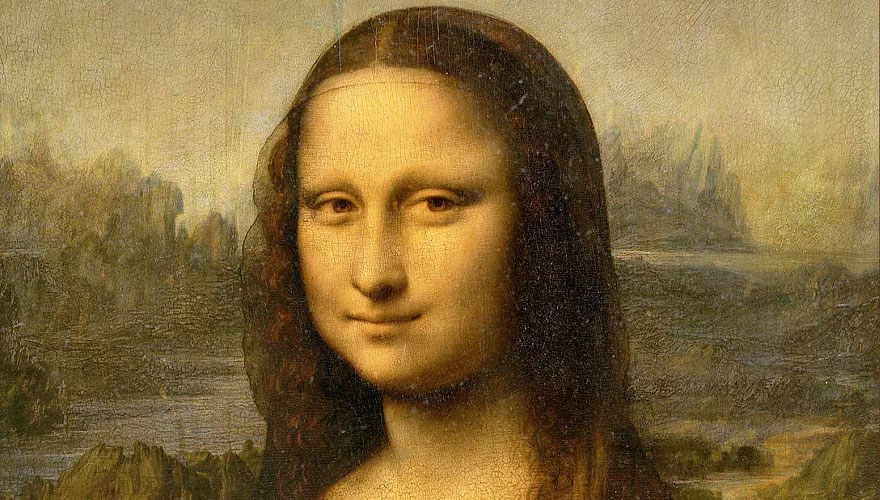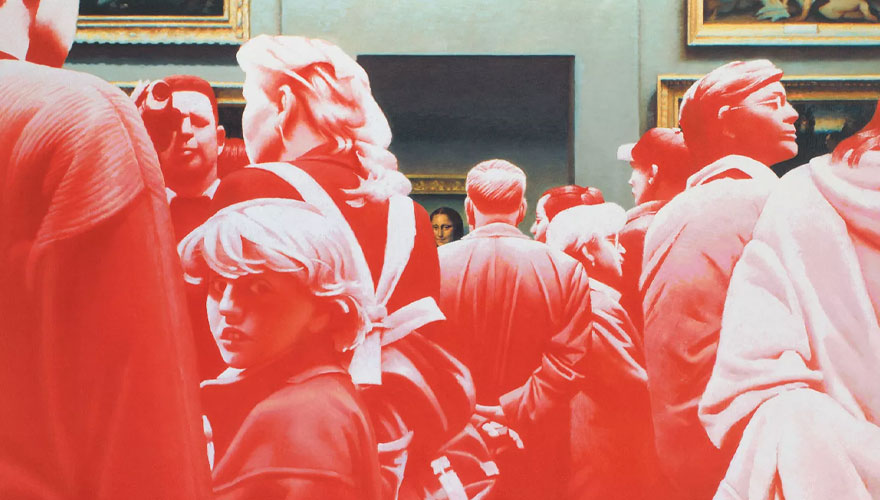
The Secrets Behind the Mona Lisa
It is undoubtedly one of the most famous paintings in the world: the Mona Lisa, also known as La Gioconda. The masterpiece of the High Renaissance was created in the early 16th century by the Italian artist Leonardo da Vinci and has since captivated countless viewers with its beauty. It shows a portrait of a woman gazing into the world with probably the most famous smile. The Mona Lisa symbolises beauty and has been the subject of much speculation and interpretation throughout history.
Who is Mona Lisa?
The creation story of the Mona Lisa is a mystery that has not yet been fully solved. It is believed that Leonardo da Vinci painted the painting between 1503 and 1506 when he lived in Florence. However, the identity of the person depicted in Leonardo da Vinci's world-famous painting is still not established. There are numerous theories and speculations about who the mysterious woman with the enigmatic smile could actually be.
One common assumption is that the person depicted is Lisa Gherardini, the wife of the Florentine merchant and friend of da Vinci Francesco del Giocondo. The painting is, therefore, also called "La Gioconda" in Italian. However, there are no written records to prove that Lisa Gherardini was actually the model for the painting.
Another theory suggests that Mona Lisa may be one of Leonardo's mistresses. Some researchers even speculate that Leonardo da Vinci portrayed himself as a woman. The identity of the Mona Lisa remains a secret and is likely to remain a mystery forever.
What Makes the Mona Lisa So Special?
Simply put: da Vinci's innovative painting technique. He was known for his unconventional painting technique and his ability to capture light and shadow in a unique way. When creating the Mona Lisa, he used some techniques that were unusual for his time and are still admired today.
The Sfumato Technique
For example, he painted the Mona Lisa using the so-called Sfumato technique. The word "Sfumato" derives from Italian and means "misty" or "blurred". It is a technique in which colours are applied in a way that they blend into each other and create seemingly endless shades. The result is a soft-focus effect that envelops the subject of the painting in a type of mist and creates a particularly soft, realistic look. Da Vinci used this technique to make the facial features of the Mona Lisa appear particularly soft and natural.
The Varnish Technique
Another technique that da Vinci made use of for his Mona Lisa is the varnish technique. This technique makes it possible to create vivid and subtle shades of colour by applying several thin layers of paint on top of each other in layers and carefully sanding each layer after it has dried. The result is unique depths and a particular vibrancy that was rarely found in the painting of the time. Da Vinci's use of this technique is particularly evident in the way he painted the skin of the Mona Lisa - it seems almost alive.

Mona Lisa Painting: The Most Famous Smile in the World
The famous painting by Leonardo da Vinci is known worldwide - this is especially due to the mysterious smile of the Mona Lisa. Many art historians have tried to decode the meaning of this smile, but it probably remains Mona Lisa's secret.
Some experts interpret the Mona Lisa's mysterious smile as an expression of wisdom and virtue, as it reflects both restraint and passion. Others believe that the Mona Lisa's smile represents a kind of irony or mischievousness. Some experts have even argued that the Mona Lisa's smile is a kind of mathematical riddle that da Vinci incorporated into the painting.
There is even a religious interpretation of the Mona Lisa smile, as it refers to the Christian idea of salvation through grace and faith. It could also be a reference to the Greek goddess of love, Aphrodite, who is often depicted with a mysterious smile.
Whatever the true meaning of the smile may be, it is undoubtedly one of the most fascinating features of the Mona Lisa. The smile captivates the viewer and makes us speculate about what the woman in the painting is thinking or feeling. The smile is an example of art that manages to create a distinctive atmosphere and tell a story without saying a single word.
It Is Not Only Mona Lisa’s Smile That Is Interpreted in Many Ways
The iconography of the painting is diverse. The Mona Lisa wears a red tunic and a green cape with fur trim, which some art historians interpret as a sign of wealth and belonging to the upper class. Her hair is combed back and covered by a transparent veil, which could symbolise her chastity.
Another symbol in the painting is the landscape in the background, which can be seen as a combination of Italian landscape and imaginary elements. In the background, there is a bridge, which can be interpreted as a symbol of the connection between heaven and earth.

The Portrait of the Mona Lisa Has Had a Considerable History of Impact and Reception up to the Present Day
Since its creation, the painting has inspired and influenced countless artists, writers and filmmakers. In the 16th century, the painting was copied and interpreted by other artists, including Albrecht Dürer and Raphael.
The Mona Lisa also appears in many caricatures and satirical works, such as Banksy's mural painting "Mona Lisa Bazooka" from 2007/2008. In this version, the Mona Lisa wears a headset and holds a rocket launcher in the artist's typical black-and-white stencil style. But even the surrealist Salvador Dalí gave the Mona Lisa a typical Dalí moustache in 1954, transforming the painting into a Dalí self-portrait.
The Mona Lisa Does Not Only Appear in the Visual Arts
The Mona Lisa has also left an impression on popular culture. In numerous films and music videos of the 20th and 21st centuries, it is often used as a symbol of mystery and beauty. Dan Brown's novel "The Da Vinci Code," which was adapted into a film in 2006, has revived interest in the Mona Lisa in recent years and led to veritable hype.
To this day, the Mona Lisa has not lost any of its fame and interest. On the contrary, visitors to the Louvre in Paris wait in line for hours every day to catch a glimpse of the famous painting.
